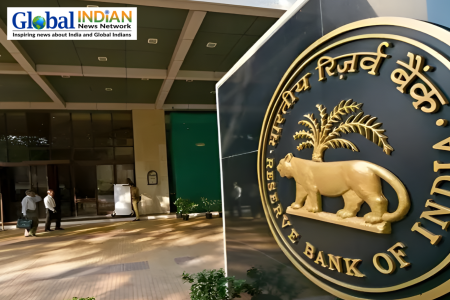
The Indian economy stands out due to its robust macroeconomic fundamentals, even amidst global challenges such as high public debt, inflated asset valuations, economic and financial fragmentation, increasing cyber threats, and geopolitical tensions, according to RBI Deputy Governor M. Rajeshwar Rao.
Economic activity in India is advancing steadily, bolstered by a more resilient financial system compared to previous years. Rao highlighted that, excluding the post-Covid surge in 2021-22, India’s real GDP growth for 2023-24 has reached its highest level since 2016-17, exceeding expectations. This period marks a shift from the pre-2020 growth average of 7 percent to a post-2020 average of 8 percent or higher, driven primarily by domestic factors.
Inflation is projected to average around 4.5 percent for 2024-25 and 4.1 percent for 2025-26. Rao emphasized that these favorable macroeconomic conditions could lay the groundwork for sustainable growth, enhance consumption, improve the investment climate, and boost external competitiveness.
The Indian banking sector has shown notable improvement in key areas such as capital adequacy, asset quality, and profitability, thanks to strong macroeconomic fundamentals and increased business confidence. Credit expansion has continued, largely driven by personal and service sector loans.
As of the end of March 2024, scheduled commercial banks reported a capital to risk-weighted assets ratio (CRAR) of 16.8 percent and a common equity tier 1 (CET1) ratio of 13.9 percent. Additionally, the gross non-performing assets (GNPA) ratio fell to a multi-year low of 2.8 percent, and the net non-performing assets (NNPA) ratio stood at 0.6 percent, reflecting strong performance.
Bank profitability remained strong, with a Return on Equity (RoE) of 13.3 percent and a Return on Assets (RoA) of 13.8 percent as of March 31, 2024. Non-banking financial companies (NBFCs) also reported solid health indicators, including a CRAR of 26.6 percent, a GNPA ratio of 4.0 percent, and an RoA of 3.3 percent as of the end of March 2024.
Despite these positive indicators, Rao cautioned that vigilance is necessary. The RBI remains attentive to risks such as strong credit growth in unsecured retail loans and increased cyber threats due to technological advances. The RBI continues to address these concerns through regular interactions with regulated entities and maintains a focus on enhancing transparency and customer experience in the financial sector.













